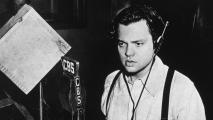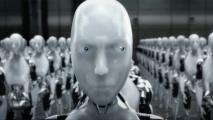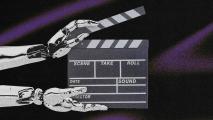It’s over! 2019 was one for the books, ya’ll. Together we explored the crazy, inspiring, uncomfortable, unknown, and remarkable frontiers of our changing world. From examining the robotic revolution (that’s taking place right now!), meeting Superhumans pushing medical boundaries, investigating solutions to climate change, and exploring international cities that give us a glimpse of our future living environments, we continue to be amazed at the possibilities our future holds.
If you haven’t had a chance to check out our 2019 shows, there’s no better time than the present. Head on over to our series page, kick back, relax, and prepare to be amazed by the opportunities thoughtful and curious people have created for our future. Go on, we’ll wait.
Seriously, we’ll wait….
Ok, now that you are all caught up with our 2019 coverage, we’d love to let you in on the behind the scenes experiences, thoughts, and insights that went into creating some of our favorite videos. We’ve asked a few of our directors to tell us about their most memorable moments on set this year.
Nick Tucker, Director of Superhuman, E-Dermis
“One of the best parts of my job is that I constantly get to meet people who are doing research at the bleeding edge of technology. This project was no exception – we were filming at the Applied Physics Laboratory, where researchers from Johns Hopkins create new technologies for the military and the latest work in prosthetics is being done. Our subject for this project, Dr. Luke Osborn, is working to create a prosthetic skin to help restore the sensation of touch to prosthetics users.
One thing I hadn’t considered until I began researching this project is that prosthetics, until now, have largely only been used to replace the mechanical features of our limbs, but our skin is more than that —it’s our largest sensory organ. Our skin is a huge part of how we perceive the world.
Andrew Rubin, pictured in the video above, is one of Luke’s research subjects. He also changed the way I think about prosthetics. He had a more pragmatic view on how prosthetics can be a part of his life — he doesn’t necessarily need a prosthesis to replicate the appearance or function of a hand, as long as it can help him do the things he needs to do. He put it this way: ‘We are confined by our, you know, the assumptions that go into thinking of the hand literally as a hand, and it’s not. It’s a metaphor and let’s think of it as a functional device, a dexterity device … Then you begin to think about what’s possible, technically possible.’
In other words, the best prosthetic might not be one that looks like a hand or a foot – it might look like anything you can imagine, and probably quite a lot more. Getting to go behind the scenes of how these technologies are made, and meeting the people who help make them, is a really amazing part of my life, and this year I was lucky enough to learn from some of the most amazing people in the world.” – Nick Tucker
Taylor Hamilton, Director of Uprising, Killer Robots
“For this particular episode we took two complicated topics, robotics and war, and really tried to provide a nuanced discussion around both. In this piece, we broke down the meaning of robotic, autonomous weapons so that we could convey the ethical implications of where this technology is headed. On one hand, autonomous weapons could actually make war “more humane”: it could help us prevent casualties, especially of civilians. But, on the other hand, the whole question of ‘who is a combatant’ is incredibly complex. Are robots capable of this understanding? And should they have the ability to take lethal actions themselves? Paul Scharre, our interview subject and the author of Army of None: Autonomous Weapons and the Future of War is the master of explaining complicated, ethical questions like this.
Another thing that was really cool about this piece was Paul’s personal story in Afghanistan, when he encountered a young Afghan girl who was conducting recon for the Taliban. Technically, this means she was a combatant. Legally, they could have killed her. But they didn’t — because he argues that what is legal isn’t always right. And to tell this incredibly powerful story we did a reenactment. Often the best stories in a subject’s life don’t have any photo or video recording – and a reenactment can act as a substitute. I think the best fictional films feel like a documentary. And the best documentaries feel like fiction.
In this reenactment, we really went for a dreamlike feel. So if you are a fan of “Stranger Things”, we definitely pulled image references from that; and from “Under the Skin” (it’s a Jonathan Glazer movie); “Dogville” (it’s Lars Von Trier). Having this black box theater feel was important to me because I didn’t want the audience to get bogged down in the details of what the characters were wearing or the location they were in. At the end of the day those details aren’t really important. This is about Paul’s story about the morality of war.” – Taylor Hamilton
Dustin Oakley, Director of Relentless
“Freethink’s Relentless series tells the story of Hamish Brewer, an unconventional principal — with a shaved head and tattoos — who is making a difference at Fred Lynn Middle School. He has set an example of what school could be like and how schools can change to better prepare our students for real life. There’s probably nothing more important than that when you talk about our future.
People sometimes question what’s happening at Fred Lynn and wonder if the change is real. But just by walking into the building you can feel it’s different. They have created a culture that should exist at more schools. A challenge with telling this story is that I’ve never quite been able to capture what it truly feels like to be there. Every shoot I drive home feeling high from the excitement and positivity. It’s very difficult to capture the reality of that place. I’m hoping I’ll get it one day.
Here’s some behind the scenes content to give you a feel of what it’s like to be a student at Fred Lynn:
And personally, it’s inspiring and encouraging to be around such a great leader like Hamish. It’s a little addictive as well. You start looking for that leadership in the rest of your life, and you rarely find it. So, I find myself stepping up to the challenge. I have learned so much about leadership, collaboration, and positive reinforcement by hanging out in that school.” – Dustin Oakley
Stay tuned for the next season of Relentless launching Winter 2020, and catch up on previous episodes now.
Jeffrey Buras, Director of Seachange
“As I’ve learned while talking to scientists over the years, the issue of climate change is huge. Every time you zoom out, the problem somehow eclipses other problems. The scale is mind-boggling, so it’s easy to feel pessimistic. In Seachange, I wanted to communicate the change that is possible if we are committed. We can restore coral reefs, we can grow forests, and we can buy time with carbon removal. These approaches are scalable, and we can make progress if we — as a society — decide that we are willing.” – Jeffrey Buras
Michael Wood, Director of Bonton Farms
“My most meaningful work experience this year was with a video on Bonton Farms. The project is currently in post-production. I was incredibly moved while reading the account of Bonton Farm’s founder, Daron Babcock. He almost lost his life to substance abuse after his wife died. Daron ended up encountering God in rehab and this experience propelled him to move to the inner city and build an urban farm to help residents lead healthier lives.
Daron is a Christian and his faith is a big part of his motivation for doing such a seemingly crazy thing. It’s one thing to build an innovative solution to address poverty. It’s another thing entirely to give up your whole life for it.
Daron’s story is a testament to the payoff of taking big risks. The urban farm he started is now one of the largest in the country and is giving meaningful opportunities to people that society has overlooked. In his interview, Daron shared that, “in life, we’re faced with opportunities that flash by from time to time and you either grab ahold of them and take the risk to get out of the boat and walk on the water,” or you don’t.
I can definitely think of situations in my life where I’ve delayed or passed up on opportunities that were presented to me because I was too fearful of what the outcome would or would not be. Daron’s story challenges me to be more daring, to take more risks, to step out of the comfort of the boat, embrace the unknown, and maybe even try to walk on the water.” – Michael Wood
Bonton Farms is expected to release Winter 2020. In the meantime, here’s some behind the scenes footage proving just how much Michael is willing to risk on set.





